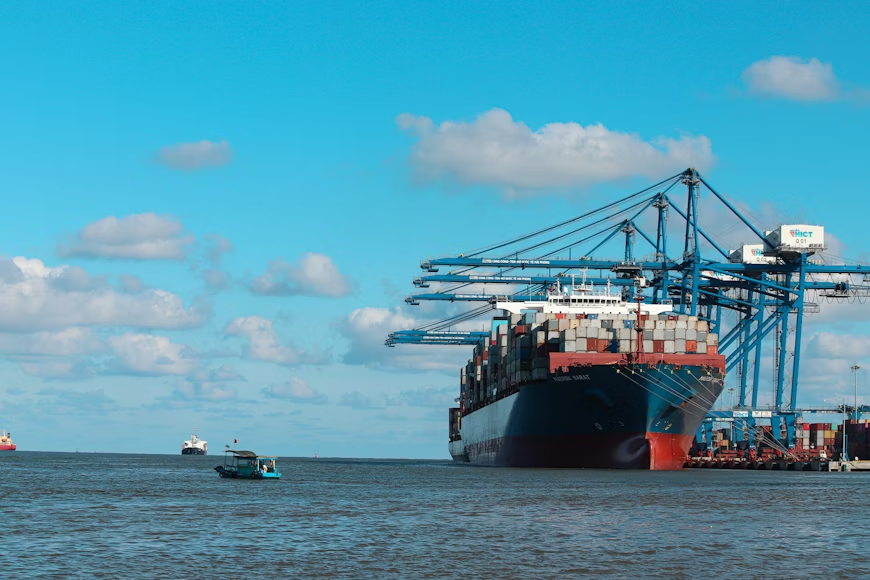Central and Eastern Europe (CEE) is increasingly integrating into the global supply chain, presenting opportunities for economic development, innovation, and a significant role in shaping global trade.
The global supply chain, an intricate network of production, logistics, and trade, connects various regions worldwide. Over the past two decades, Central and Eastern Europe has become a crucial hub in this interconnected system. Countries in this region leverage their geographic, economic, and talent advantages to become key nodes in diverse industries.
The geopolitical landscape, including the COVID-19 pandemic and Russia’s war on Ukraine, has accelerated this transformation. These events have caused immediate disruptions and raised questions about the long-term stability and security of supply chains, highlighting the importance of diversifying and potentially relocating closer to home markets to mitigate risks.
The Future of Manufacturing in CEE
Manufacturing in CEE is transitioning to a high-tech, value-added era, influenced by environmental, social, and governance (ESG) considerations. According to a report from the Centre for Economic Policy Research (CEPR) and suggestions from KPMG, the war in Ukraine may permanently alter global supply chains. KPMG notes that while globalization has benefited countries and corporations over the past 30 years, recent years have seen support for globalization decline, trade tensions rise, and vulnerabilities in global just-in-time supply chains exposed by COVID-19.
The PwC Global CEO survey indicates that 37% of CEOs in Central and Eastern Europe view supply chain instability as a major factor influencing their strategies over the next three years.
Automotive Industry Shift
The automotive industry exemplifies this shift, with Central and Eastern Europe becoming a vital link in the global automotive supply chain. Countries such as Poland, Czechia, Hungary, Slovakia, and Romania have attracted significant investments from global automotive manufacturers due to skilled yet competitively priced labor, strategic locations, and favorable economic policies. The region’s contribution extends to electric vehicles (EVs), with significant roles in battery production and assembly.
For instance, Slovakia has one of the highest car production rates per capita, hosting manufacturers like Volkswagen, Kia, and Peugeot. Poland and Czechia have seen substantial investments, with companies such as Toyota and Hyundai expanding operations. The push towards EVs is further underscored by LG Chem’s major EV battery plant in Poland, the largest in Europe.
From Outsourcing to Innovation
Central and Eastern Europe has established a significant niche in the global IT outsourcing and technology innovation landscape. Countries like Ukraine, Romania, and Poland are recognized for their highly skilled IT workforces, competitive cost structures, and rapidly evolving tech ecosystems. These countries offer technical expertise and innovation, attracting international companies for IT services and research and development centers.
Before the Russian invasion, Ukraine was emerging as a leading IT outsourcing destination with significant growth in software development and IT services exports. Similarly, Poland and Romania have become hubs for tech companies, driven by strong educational focus on STEM fields, governmental support for the tech industry, and an entrepreneurial culture.
Significant projects and collaborations highlight the region’s capabilities, such as Romania’s role in developing cybersecurity solutions and Poland’s booming gaming industry. Estonia and Lithuania also demonstrate strong tech sectors, with Estonia being known for its tech startups and Lithuania for its fintech innovations.
Challenges and Resilience
While Russia’s war on Ukraine has highlighted vulnerabilities within the region, it has also demonstrated resilience. Initially, the conflict caused disruptions in logistics and supply routes, especially for industries reliant on Ukrainian and Russian resources. This led to increased costs, production delays, and operational uncertainties. However, countries have adapted by seeking alternative suppliers and markets, accelerating the diversification of supply chains.
Governments and businesses in the region have implemented contingency plans and invested in infrastructure to mitigate the impact of the conflict. The crisis has also spurred a reevaluation of regional cooperation and economic integration, with a focus on strengthening intra-European trade relationships and improving intra-regional infrastructure.
The Three Seas Initiative (3SI) is mobilizing investments across energy, digital, and transport sectors to bridge the infrastructure gap between CEE and Western Europe. This initiative aims to establish the region as a formidable player on the global stage.
A Robust Foundation for Future Growth
Central and Eastern Europe’s role in the global supply chain is undergoing significant transformation. Once peripheral players, countries in the region are now central to industries such as automotive manufacturing and IT. Their strategic location, technological innovation, and skilled workforce have cemented their position in the global supply chain network.
However, challenges such as geopolitical tensions, infrastructure needs, and the need for continuous technological advancement remain. The resilience and adaptability demonstrated by the region, especially in recent challenges, provide a robust foundation for future growth.
Central and Eastern Europe’s integration into the global supply chain presents opportunities to drive economic development, foster innovation, and shape the future of global trade. By leveraging the current geopolitical landscape and investing in the future, the region can enhance its global economic position and contribute to a more diversified, resilient, and sustainable global supply chain.
Stay informed with supply chain news on The Supply Chain Report. Learn more about international trade at ADAMftd.com.
#GlobalSupplyChain #CentralEasternEurope #ManufacturingInnovation #LogisticsHub #SupplyChainNews

















